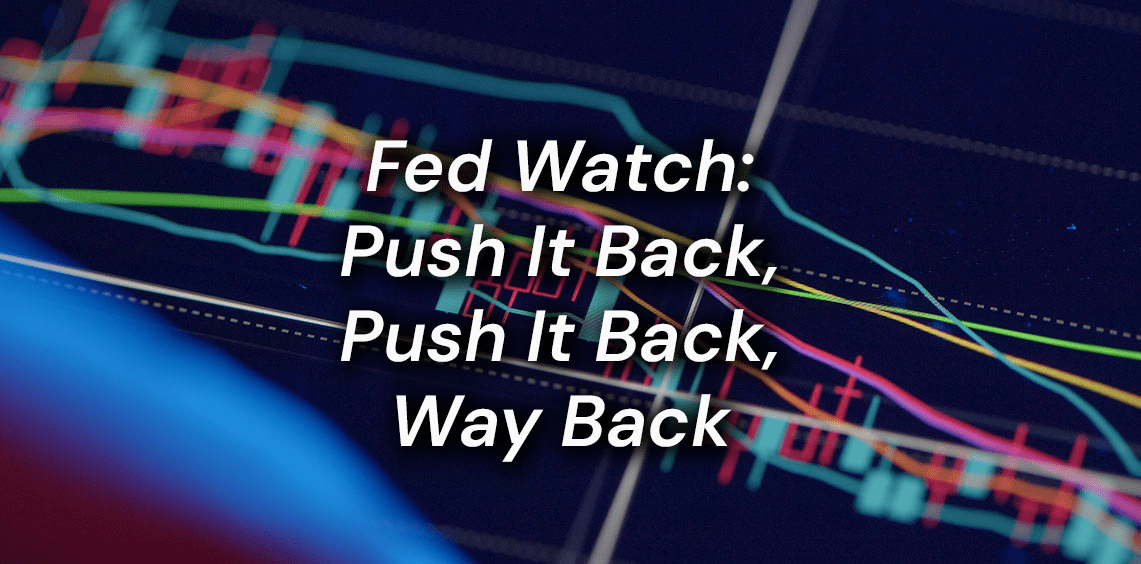Let’s first talk about the Fed meeting this week. A 25-basis point hike is well telegraphed. What I would like to see Austin Goolsbee, the new Chicago Fed president and a voting member, do is dissent to the hike with a preference for no increase. He commented on CNBC he is looking at the data like a hawk to make his decision. It has been mixed, but there are several more indicators this week before the meeting.
One thing that caught my eye was initial jobless claims. This is quite a volatile weekly indicator. We had a pick-up in joblessness but the last week did not confirm that upward move. This latest number also is post the Silicon Valley Bank (SVB) collapse—and we don’t have much data that gives that type of read. The lack of movement up in jobless claims is one indicator the Fed can say reflects underlying strength in the economy—ammunition for hawks.
Another surprise was the Case-Shiller Home Prices Index, which had a very tiny increase after 7-8 consecutive months of decreases. Are home prices finally stabilizing after a 5% decline from their peak year over year? I think there is likely more softness to come after home prices rose 45% from March 2020 to March 2022.
Gross domestic product (GDP) data came out below expectation, but mostly because of an inventory drawdown, which is not a negative factor going forward. The low GDP does mean however that productivity again looks pretty bad in the first quarter. With a 1.1% annualized increase in GDP, and more than a million workers hired in the first quarter, that will translate to sluggish productivity. This is a continued theme of the last few years—I was hoping to see a productivity rebound with firms laying off less productive workers to support margins.
The core personal consumption expenditures (PCE) inflation indicator came in basically on or a tad above target. This gives ammunition for the hawks to continue on their current path.
For the equity markets, we are in the heart of earnings season, and they are coming in solid. The beat rate is coming in slightly above average. WisdomTree’s Earnings Path tool shows a 7% surprise in S&P 500 quarterly earnings for the 64% of the index weight that reported.
Amazon said on their conference call they are seeing a slowdown in both their consumer business and retail, with inflation impacting spending but also a slower growth rate in their AWS cloud services. After a good initial reaction in the stock to the release, it reversed sharply during the call with this more cautious assessment looking ahead.
Inflation and the supply side of the economy is normalizing. There are reports that the price for a dozen eggs is dropping back to $1 per dozen after it surged to $5 per dozen with the Avian flu crimping supply.
The Fed really should be in cutting mode with yet another drop in the money supply. Of course, they won’t yet. Money market ETFs are very attractive relative to checking accounts and they are not counted in M2. Maybe they should be eventually, like money market mutual funds.
What could stimulate the market this week would be a Powell statement that hinted at a pause in rate hikes coming at the June meeting.
If the message is ‘we need to see more evidence inflation is declining’ that could discourage the market.
Market-based indicators of inflationary expectations remain subdued. We have another bank, First Republic, under stress and by the time you read this commentary, there may be a resolution. Yet the markets are not concerned about this systemic risk. Deposits are safe. This is not like the banking stress in 2008, yet I remain concerned there may be a slowdown in the economy from tightness in lending standards. Let us hope Powell and company at the Fed recognize these risks this week.
Past performance is not indicative of future results. You cannot invest in an index.
Professor Jeremy Siegel is a Senior Investment Strategy Advisor to WisdomTree Investments, Inc. and WisdomTree Asset Management, Inc. This material contains the current research and opinions of Professor Siegel, which are subject to change, and should not be considered or interpreted as a recommendation to participate in any particular trading strategy, or deemed to be an offer or sale of any investment product and it should not be relied on as such. The user of this information assumes the entire risk of any use made of the information provided herein. Unless expressly stated otherwise the opinions, interpretations or findings expressed herein do not necessarily represent the views of WisdomTree or any of its affiliates.






